Class 4 EVS Worksheet Solutions Chapter 8 How Things are Made
| Table of contents |

|
| Multiple Choice Questions (MCQs) |

|
| Fill in the Blanks |

|
| Match the Following |

|
| Short Question Answers |

|
| Vocabulary Activity - "Guess the Word" |

|
Multiple Choice Questions (MCQs)
Q1: What is the primary material used to make recycled paper?
(a) Wood pulp
(b) Old newspapers
(c) Plastic
(d) Cloth
Ans: (b) Old newspapers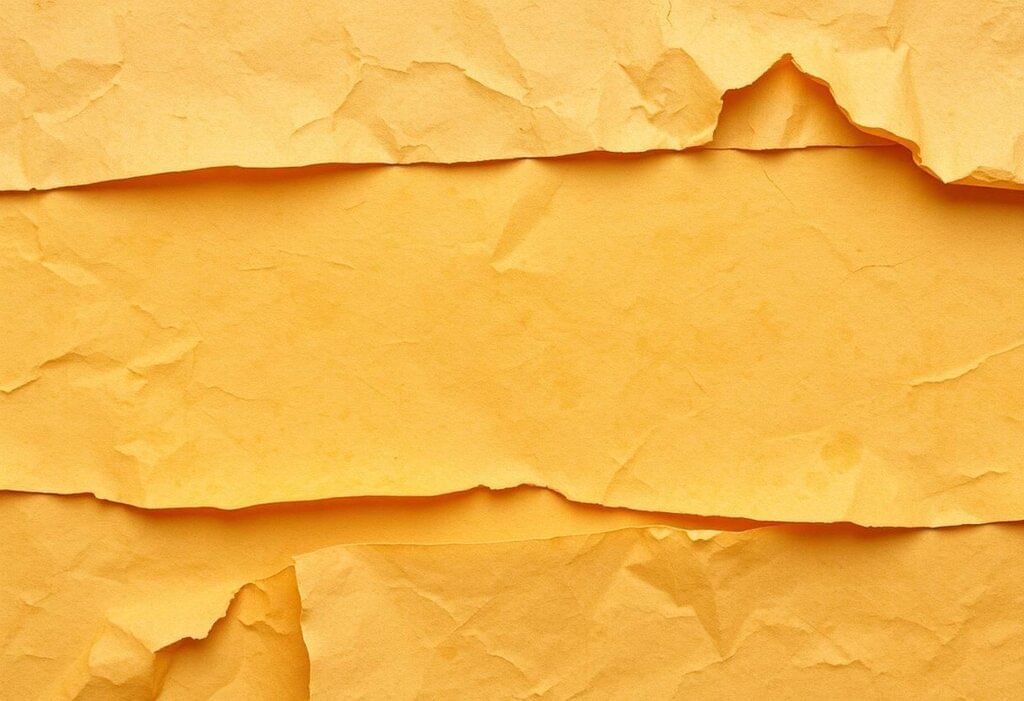
Q2: Which of these ingredients can be used to color recycled paper naturally?
(a) Turmeric
(b) Artificial dyes
(c) Paint
(d) Ink
Ans: (a) Turmeric
Q3: What is the Braille system used for?
(a) To help visually impaired people read and write
(b) To make paper
(c) To teach children about colours
(d) To decorate paper
Ans: (a) To help visually impaired people read and write
Q4: What is an example of an eco-friendly material used to make paper?
(a) Banana fiber
(b) Plastic
(c) Cotton
(d) Leather
Ans: (a) Banana fiber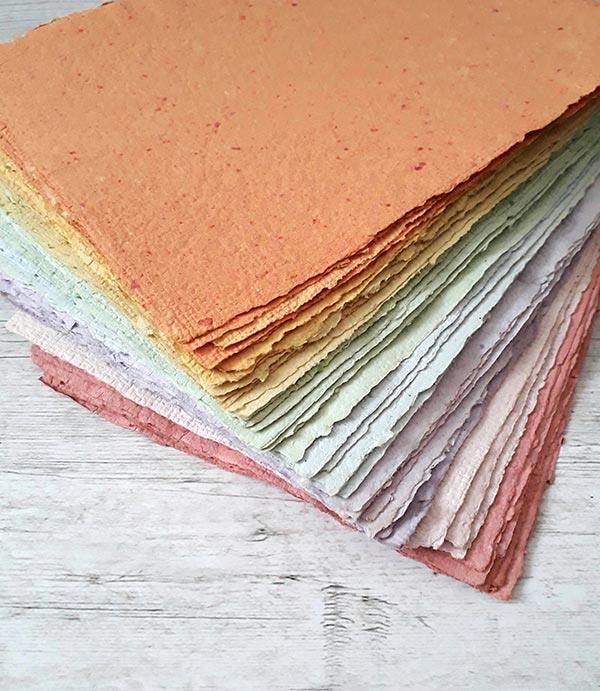
Q5: What is the purpose of fenugreek seeds in making recycled paper?
(a) To add color
(b) To bind the paper
(c) To soften the paper
(d) To make the paper waterproof
Ans: (b) To bind the paper
Fill in the Blanks
Q1: Recycled paper is made from old ________.
Ans: newspapers
Q2: The process of turning old materials into new products is called ________.
Ans: Recycling
Q3: ________ is a system of raised dots on paper that allows visually impaired people to read.
Ans: Braille
Q4: ________ are eco-friendly materials that can be used to make paper, helping to save trees.
Ans: Banana fiber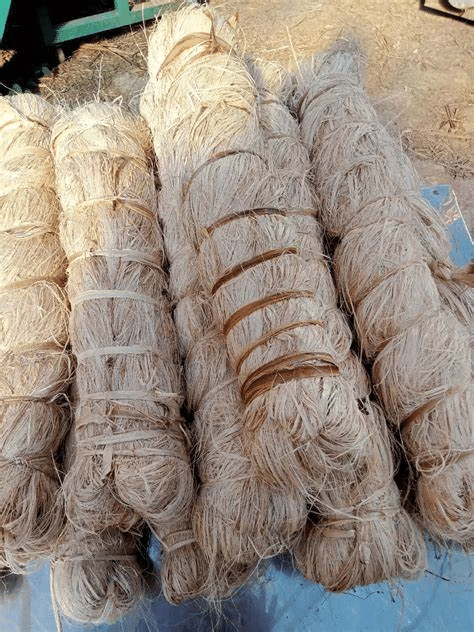
Q5: The 5Rs of waste management are: Refuse, Reduce, ________, Repurpose, and Recycle.
Ans: Reuse
Match the Following
Ans: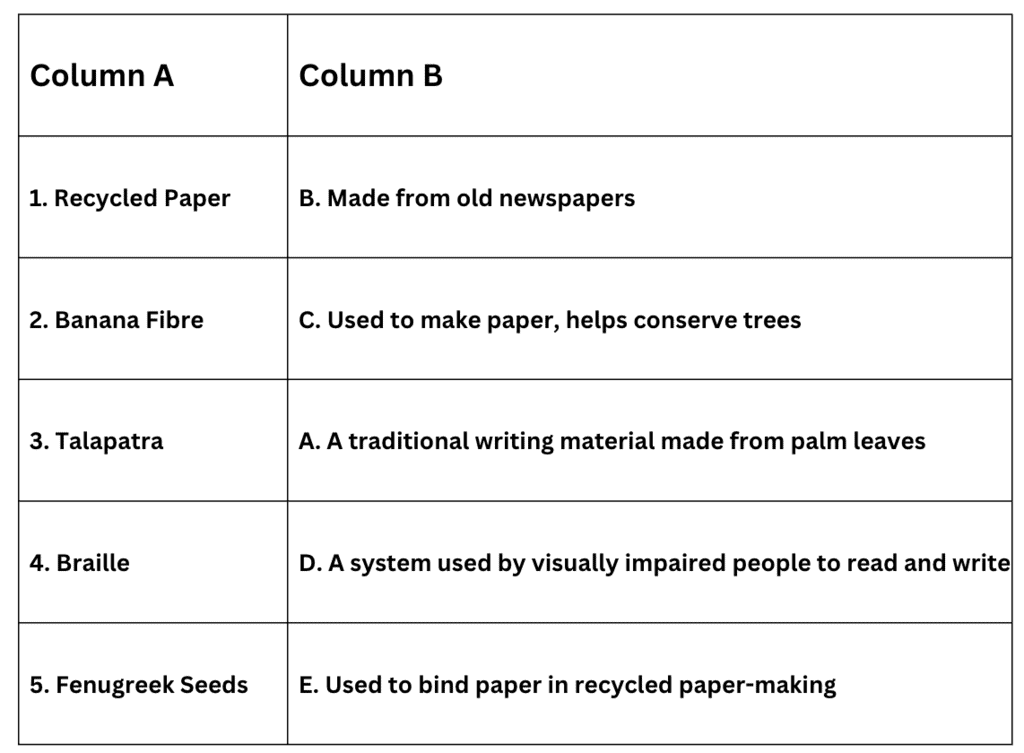
Explanation:
1. Recycled Paper → B. Made from old newspapers
Recycled paper is made by using old newspapers again. It helps reduce waste and saves trees.
2. Banana Fibre → C. Used to make paper, helps conserve trees
Banana fibre comes from the banana plant and is used to make paper without cutting trees.
3. Talapatra → A. A traditional writing material made from palm leaves
'Talapatra' are palm leaves that were used for writing in olden times.
4. Braille → D. A system used by visually impaired people to read and write
Braille is a special way of reading and writing using raised dots for people who cannot see.
5. Fenugreek Seeds → E. Used to bind paper in recycled paper-making
Fenugreek seeds help stick the paper pulp together when making recycled paper.
Short Question Answers
Q1: How do you make recycled paper?
Ans: To make recycled paper, tear old newspapers into small pieces, soak them in water with fenugreek seeds overnight, mash the mixture, spread it on a flat surface, and let it dry. The paper is ready for use!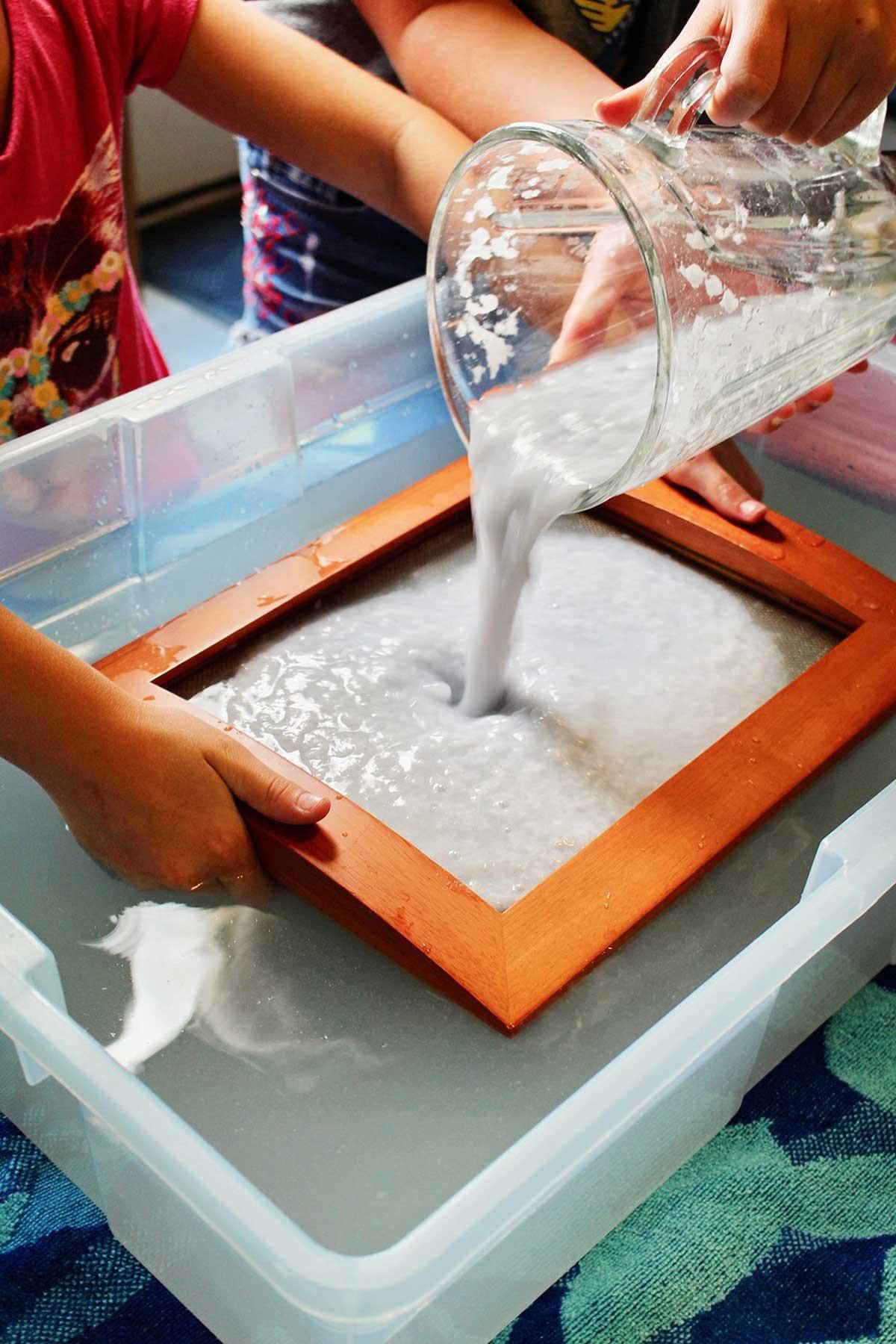
Q2: Why is it important to use eco-friendly materials like banana fiber for making paper?
Ans: Using environment-friendly materials like banana fiber helps conserve trees, which are essential for the environment, and prevents deforestation.
Q3: What does the 5Rs of waste management stand for?
Ans: The 5Rs stand for Refuse, Reduce, Reuse, Repurpose, and Recycle. These steps help minimize waste and conserve resources.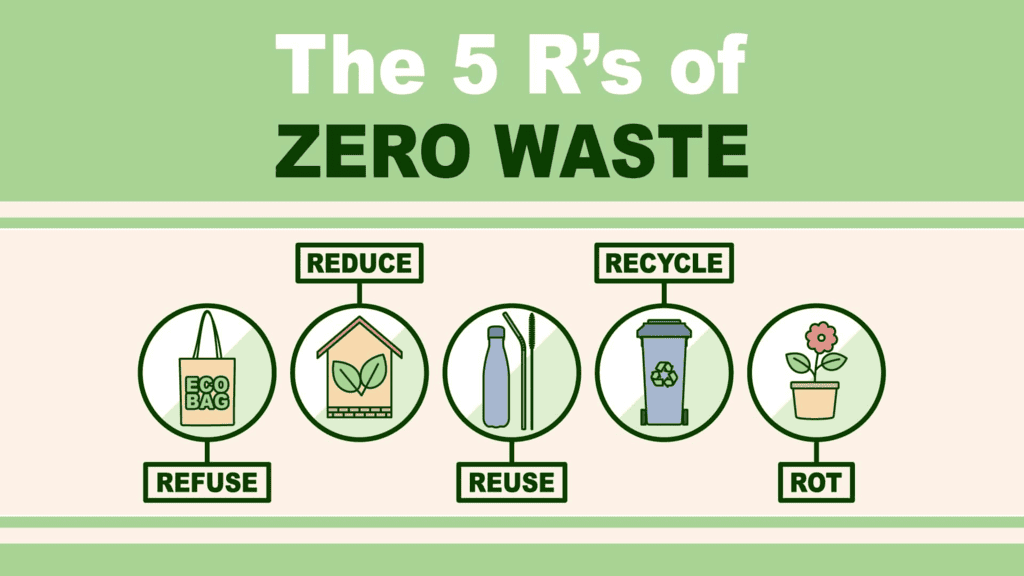
Q4: How can we make a greeting card using recycled paper?
Ans: To make a greeting card, cut recycled paper into a card shape, color it using natural dyes, and decorate it with creative designs or drawings.
Q5: How does the Braille system help visually impaired people?
Ans: The Braille system uses raised dots on paper that can be felt with the fingers, allowing visually impaired people to read and write independently.
Vocabulary Activity - "Guess the Word"
Q1: The process of turning old paper into new paper.
Ans: Recycling
Q2: A system of raised dots used by visually impaired people to read and write.
Ans: Braille
Q3: A type of seed used as binding material.
Ans: Fenugreek
Q4: A natural material used to make paper and other products, such as banana fiber.
Ans: Environment - friendly materials
Q5: A material used historically in India for writing, made from palm leaves.
Ans: Talapatra
FAQs on Class 4 EVS Worksheet Solutions Chapter 8 How Things are Made
| 1. What are the main steps involved in the manufacturing process of everyday products? |  |
| 2. How does technology impact the way things are made? |  |
| 3. What materials are commonly used in manufacturing? |  |
| 4. Why is quality control important in the manufacturing process? |  |
| 5. How do manufacturers ensure sustainability in their production processes? |  |















